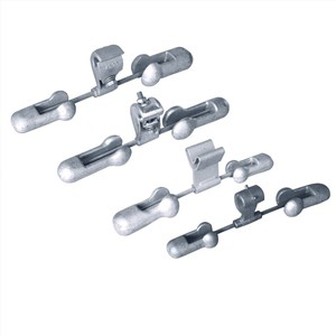The difference between fiber optic cable and cable
In the network hardware, there is another category that cannot be ignored is the network transmission medium, which we usually call the network cable. At present, the more common network cables are divided into thin twisted pairs, optical fiber cables, coaxial cables and thick coaxial cables.
Fiber optic cable is a new generation of transmission media. Compared with copper media, optical fiber has greatly improved in terms of safety, reliability and network performance. In addition, the bandwidth of optical fiber transmission greatly exceeds that of copper cables, and the maximum connection distance it supports is more than two kilometers, which is an inevitable choice for building a larger-scale network. Because the optical fiber cable has the advantages of good anti-electromagnetic interference, strong confidentiality, fast speed, large transmission capacity, etc., its price is also relatively expensive, and it is rarely used in household occasions.
At present, there are two different types of optical fibers that are more common, namely single-mode optical fibers and multi-mode optical fibers (the so-called "mode" refers to a beam of light entering the optical fiber at a certain angle). Multimode fiber is generally used for network connections in the same office building or in a relatively close area. The single-mode optical fiber transmits data with higher quality and longer transmission distance, and is usually used to connect office buildings or geographically dispersed networks. If optical fiber and cable are used as the network transmission medium, it is necessary to add equipment such as optical transceivers, so the cost investment is greater, and it is less used in general applications.
Twisted pair is a kind of flexible communication cable, which contains a pair of insulated copper wires. It is characterized by low price, so it is widely used, such as our common telephone lines. According to the difference of the maximum transmission rate, twisted pair can be divided into 3 types, 5 types and super 5 types. The rate of category 3 twisted pair is 10mb/s, category 5 can reach 100mb/s, and category 5 is up to 155mb/s, which can be suitable for the needs of future multimedia data transmission, so it is recommended to use category 5 or even category 5 double Stranded wire.
twisted pair can also be divided into shielded twisted pair (stp) and unshielded twisted pair (utp). Although the speed of stp twisted pair is lower (only 4mb/s), it has stronger anti-interference than utp twisted pair, so the price is much more expensive. Now this kind of twisted pair is cheaper by a few yuan per meter, maybe it is expensive One meter can be bought for more than ten yuan. In contrast, the price of utp twisted pair is generally about one yuan per meter, which is relatively low.







